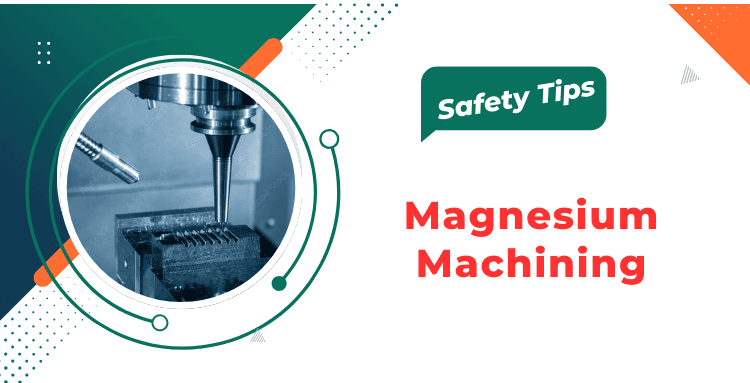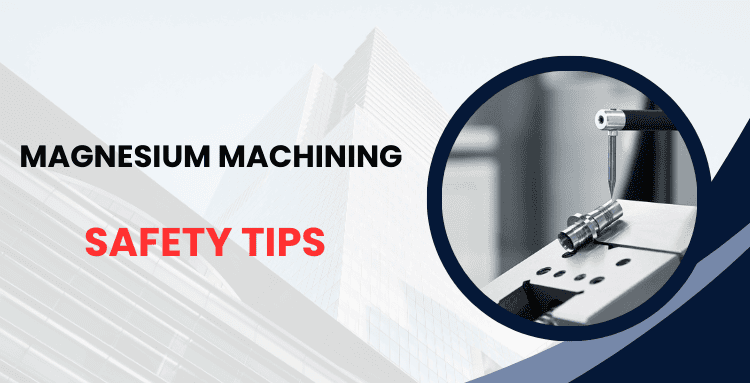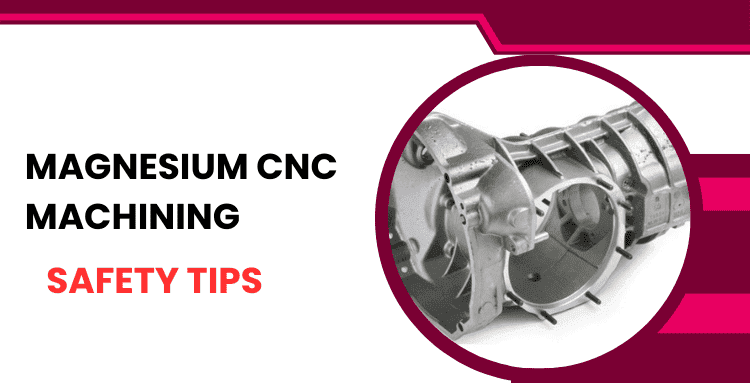The global trade volume of Magnesium CNC machined parts will boost up to $6 billion by 2030. It is one of the latest reports published on Yahoo Finance. The point is what makes magnesium excellent for CNC machining products? One of the best qualities of magnesium is its strength-to-weight ratio. No doubt, it is an excellent material for manufacturing machined parts also. However, magnesium also carries some flammable features which require safety. So in this article, we are going to explain the safety approach compared to other machining materials.
Why Choose Magnesium for CNC Machining?
At the beginning of the article, we mentioned the two best features of magnesium as a material for CNC machining. In this section, we are going to expand it further. Below, we shall describe more reasons to choose this material to make CNC machined parts.
Dimensional Stability
Magnesium performs very well in temperature variations. This feature is excellent for complex applications.
Natural EMI/RFI Shielding
Magnesium provides electromagnetic interference (EMI) and radio frequency interference (RFI) shielding properties. This technology effectively controls noise in high-end electronics.
Research by Liu et al. (2023) explores the use of cryogenic cooling to get the smoother and cooling surfaces of the parts. Earlier it was challenging for several machinists. (Journal of Manufacturing Science and Engineering (2023)
Despite its popularity, there have been some incidents also. For instance, ABC News reported in 2024 that a fire burst in a machining center due to improper handling of magnesium chips during a machining process.
We’ll explore the potential risks associated with magnesium machining. Furthermore, we shall recommend:
- Tooling and coolant selection
- Chip handling protocols,
- Fire safety measures.
Also Read:
Aluminum Machining 101
How to safely machine magnesium?

Magnesium’s strength makes it a prominent choice for machining CNC parts. However, it is flammable. It means you need to take serious safety measures also. Here’s a quick overview of key safety measures:
- Reduce Ignition Risks:
- Use sharp cutting tools and good clearance angles.
- Go for mineral oil coolant (avoid water-based).
- Reduce open flames from the workspace.
- Mitigate Dust Hazards:
- Implement a proper ventilation system.
- Regularly clean the machine and surrounding area.
- Store magnesium chips safely in closed metal containers (away from flammables).
Magnesium CNC Machining: Safety Guides & Tips
The chips and dust from machining magnesium are highly flammable. Without proper care and preparation, CNC-machined magnesium can become a serious safety concern.
As you may already know, magnesium chips are highly flammable. These can make the machining process a serious safety issue. But if that’s the case, why are magnesium and its alloys becoming more and more popular in the manufacturing industry?
CNC machining of magnesium is perfectly safe if machinists undertake proper care. Maintain proper tool condition and avoid tight clearance angles. Discontinuous chips help dissipate heat from the cutting surface and cutting tools. This reduces the chance of ignition.
Eliminate the use of coolant altogether or use a light mineral oil coolant instead of a water-based coolant. Coolant can increase the risk of magnesium fire because it is a source of hydrogen gas.
Magnesium is easily oxidized. We often perform surface treatment to improve the service life of the product. This part was treated with a micro-arc oxidation process.
What are some challenges involved in Magnesium CNC Machining?
The key safety concerns associated with machining magnesium are linked to the following 6 factors:
- Material’s high flammability
- Explosion potential
- Health hazards
- Increased tool wear
- And surface finish challenges.
With regard to the first aspect, both magnesium chips and dust produced by the CNC process are classified as highly flammable materials. Ignition resulting from both the former and the latter of these products is primarily the result of friction. This friction is between the machining tools and the magnesium workpiece and the heat generated in the process.
These are the precipitators of ignition. In addition to the inability to precisely transmit the heat away from the cutting area. This is caused by magnesium’s poor thermal conductivity. It is also possible to pinpoint the idea that dull cutting tools may lead to even higher levels of friction.
Tips for Safely Machining Magnesium
We’ll address some common misconceptions about machine shop safety:
- Gloves:
- Use nitrile gloves for coolant and fluids to avoid dermatitis and latex allergies.
- Don’t wear glovesnear rotating machinery – they can get caught and pull your hand in.
- Long Hair:
- Tie back long hair to prevent it from getting caught in rotating parts.
- Machine Interlocks:
- Never removeinterlocks – they safeguard against accidents.
- Air Blow Guns:
- Never useair blow guns to cool yourself down – air bubbles can be fatal.
- Be aware of the loud, high-pitched noise when using air blow guns – wear ear protection.
- Ear Protection:
- Use earplugs for all-day wear to reduce noise fatigue.
- Use over-the-ear muffs for high-pitched noises like machining aluminum tubing.
Remember, safety is paramount in the machine shop. By following these tips and using the proper personal protective equipment, you can minimize risks and ensure a safe working environment.
To address these concerns. To ensure safe magnesium CNC machining must follow tips and safety precautions.
- Using the coolant is crucial to prevent heat generation during magnesium machining.
- Mineral oil coolants are recommended over water-based. One due to their ability to reduce fire risks associated with water interaction.
- Adding breaks to the machining process can lower the risk of overheating for magnesium. Thus decreasing the chances of fire hazards while allowing for chip removal.
- When using a cutting tool or one, with a chip breaker it creates chips allowing for the production of small chips.
- Access to cutting tools coated with materials (like TiN, TiCN, TiAlN) designed for magnesium machining. It will reduce friction and prevent heat buildup.
| Challenges | Reasons |
| High Flammability | Magnesium has a very low ignition temperature (around 470°C) compared to other metals. |
| Ignition Sources | Dull cutting tools and tight clearance angles create friction, generating excessive heat that can ignite magnesium chips. |
| Magnesium Dust Explosion | Magnesium dust suspended in the air can form a highly explosive mixture. |
| Tooling & Coolant | Sharp tools reduce friction and heat generation, minimizing the risk of ignition. |
| Chip Handling & Storage | Adequate ventilation systems remove dust particles from the machining area, reducing the risk of explosion. |
| Fire Safety Measures | Train personnel on proper fire safety procedures, including extinguisher use and emergency evacuation plans. |
Right Cutting Tools For Magnesium Machining

Selecting the tools is crucial for efficient magnesium machining operations. Below are some recommended cutting tools, for working with magnesium materials.
High-Speed Steel Tools
High-speed tools are both reliable and affordable. They come at a cost compared to cutting tools. Moreover, they provide a cutting speed ideal, for machining magnesium. You can sharpen these tools many times without harming their quality. This makes them good for many tasks.
Coated Carbide Tools
These coating tools have materials like titanium nitride or aluminum nitride. It results in better heat control and reduces wear and tear. The coatings also reduce friction during machining processes.
Carbide Tipped Tools
People recognize them as choices for CNC machining. Magnesium carbide-tipped tools boast wear resistance, heat resistance, and hardness. They keep sharpness over prolonged periods reducing the need for reshaping.
Additionally, they help achieve surface finishes. They also make it easy to remove material without breaking because they are fast.
Polycrystalline Diamond Tools
These tools are built for complex geometries. Subsequently, they have great wear resistance and hardness. In addition to hardness, diamond tools provide high-precision results also.
Conclusion
By doing so, they can ensure an efficient working environment. It prioritizes safety for both employees and facilities.
By following our safety guidelines and valuable advice, you can operate magnesium CNC machines. It will enhance efficiency and compliance with safety standards. Reach out to us now to streamline your safety procedures for magnesium CNC machining!
FAQs
What is a major safety problem when machining magnesium?
Machining magnesium causes highly flammable chips and dust. This poses a significant fire and explosion hazard.
Why is machining magnesium considered to have machinability?
Magnesium is a material, for machining purposes. It is because of its nature, ease of cutting, and good thermal conductivity. It also tends to produce burrs. This is helpful when crafting light parts with tight tolerances and complex designs. Working with magnesium during machining poses a fire risk. This requires safety precautions.
Why is magnesium challenging to machine?
Despite its machinability, magnesium is hard to machine. This is due to its flammability and low thermal conductivity. Chips and dust form during machining. They can complicate operations and cause fire or explosion hazards. But this only happens if they are not properly managed.
What safety measures should be observed when machining magnesium?
The following precautionary steps are recommended for CNC machining operations involving magnesium;
- Implementing fire prevention protocols
- Selecting cutting tools
- Using mineral-based coolant solutions
- Employing systems for chip and dust removal
- Ensuring adequate ventilation
- Wearing personal protective gear such, as goggles and gloves
Why do people prefer using mineral-based coolants over water-based ones when machining magnesium?
Mineral-based coolants are favored due to their reactivity compared to water-based alternatives. This helps reduce the chances of fire or combustion during the machining process. It enhances the quality of the machined magnesium parts.

 (+86) 188-2253-7569
(+86) 188-2253-7569
